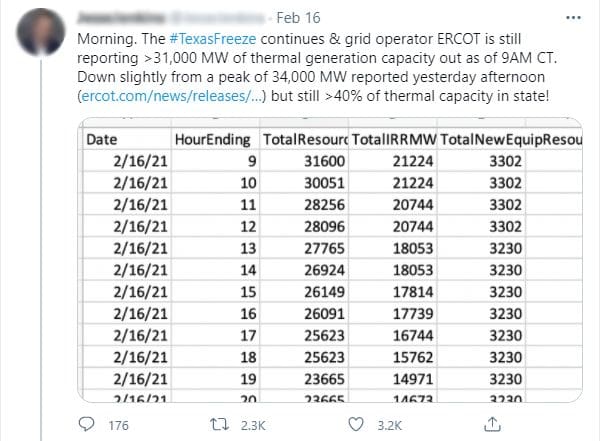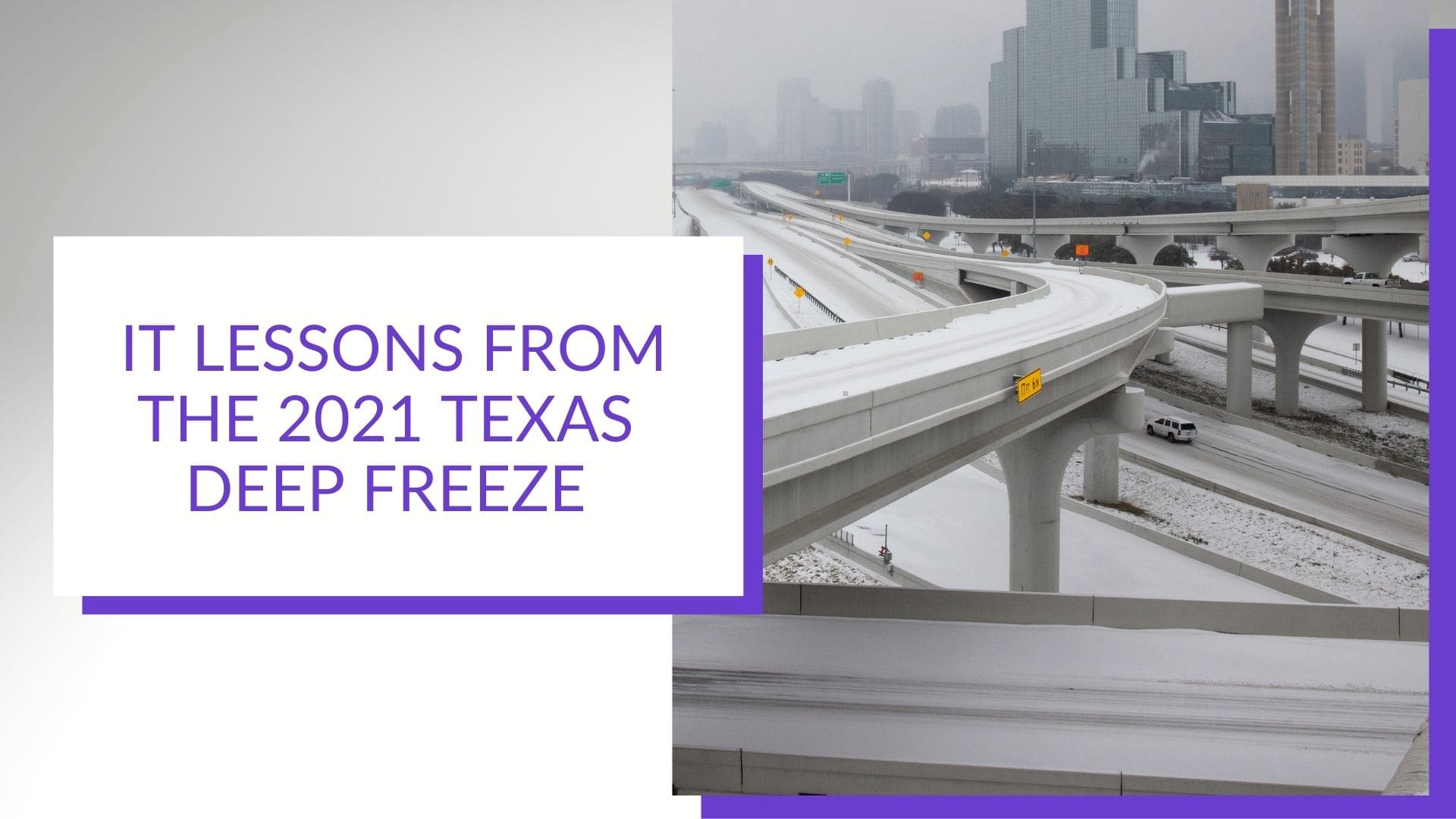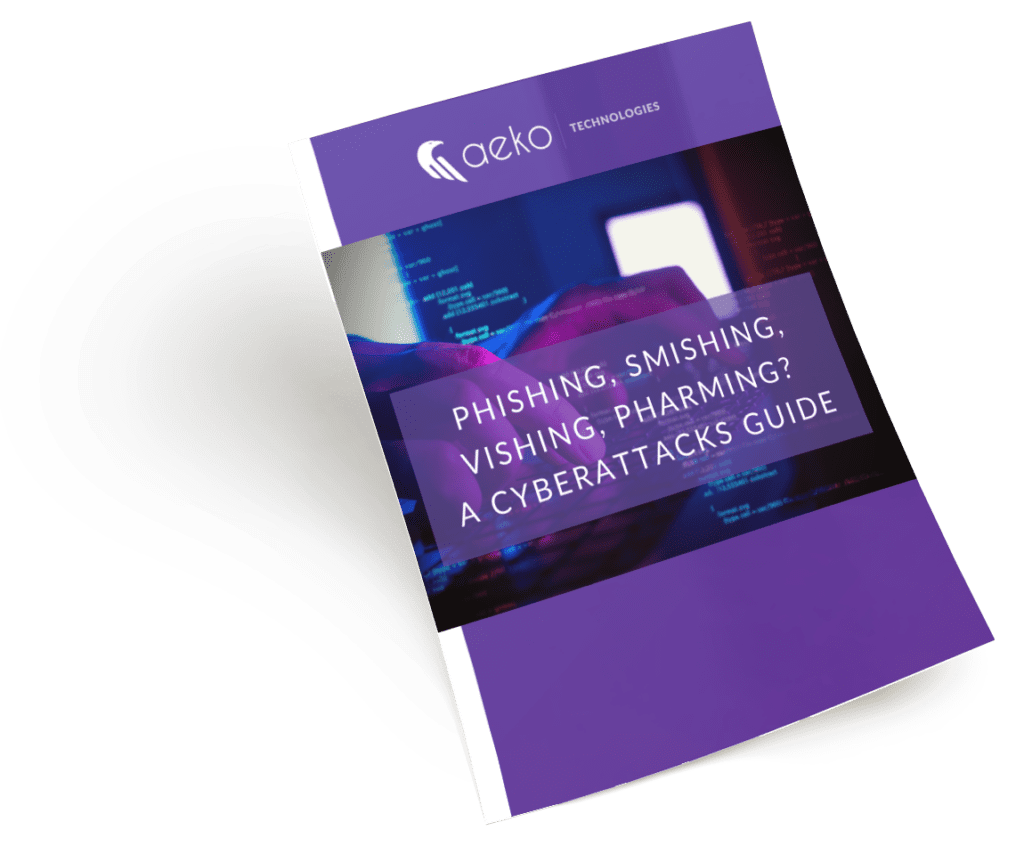IT techs continually talk about safeguarding IT data from hackers and natural disasters. Worst-case scenarios are always discussed. What’s not often mentioned is sustained interruption of data, such as what businesses recently experienced with the 2021 Texas freeze that crippled millions of people and businesses throughout Texas.
Here’s what happened: The ERCOT (Electric Reliability Council of Texas) underestimated the worst-case scenario and unfortunately learned the hard way.
When Your Worst-Case Scenario Isn’t Bad Enough
ERCOT had not properly maintained equipment nor properly projected maximum power consumption for the Texas power grid. This oversight resulted in multiple sources of energy, both renewable and thermal production, failing because they weren’t properly winterized and maintained. They underestimated the worst-case scenario by a large amount.
Here’s a great in-depth Twitter analysis. (How often does that get said?)

Spring Thaw or Potential Disaster?
The last two times we had an extended period of extreme cold, accompanied by heavy precipitation were 1899 and 1949. Both times were followed by devastating flooding in the spring. So now is a good time to consider how impacted your business might be by torrential, flooding rains or the power outages that likely would follow.
In 1899, the coldest winter on record in Texas was followed by 12 straight days of rain in June, inundating Waco, Belton and much of Central Texas along the Brazos and Colorado rivers.
In Fort Worth, the low temperature recently was 2 degrees below zero. That matched a chilly low on Jan. 31, 1949. Three months later — barely time to recover — more than 10 inches of rain turned the Trinity River into a sea 14 blocks wide.
The 1949 flood killed 10 people and pushed 13,000 people out of their waterlogged homes. That storm was the only cold snap that brought as much snow and ice statewide as this one in February 2021, according to John Nielsen-Gammon of the Texas Center For Climate at Texas A&M University.
“This combination of extreme cold and heavy winter precipitation is a lot more rare than just cold temperatures alone,” he said, “This whole storm was so unusual.”
Think about it. Usually when it’s bitterly cold, it’s also dry.
We know from experience that natural disasters are nothing new to Texas. The aftermath of the 2021 freeze dictates the immediate need to do a risk analysis and take a look at how impacted your business might be by flood or power outages. We can’t count on these disasters not happening again for 50 years. We need to protect our data as much as possible now.
Take Steps Today to Prevent Future Issues
Though it seems unlikely to happen again in the near future, there are no guarantees with the weather. So, the best approach is a preventative one. Here is what every company in Texas (and in any other state) should do:
- Conduct proper capacity planning and risk analysis to ensure you understand what your needs will be in the event of a future disaster, and not learn about them DURING the disaster.
- Define and test your business continuity plan to ensure you are really prepared. It isn’t enough to just put your plan to paper. Test it like you would a fire drill to make sure everything works as expected.
- Test uninterrupted power supply (UPS) batteries regularly and replace when needed.
- Monitor servers for predictive failures.
- Update all appropriate software, firmware and drivers so they can be counted on to work when you need them the most.
Discuss these measures with your IT team or service provider today. Our staff at Aeko can help prepare your company for any future disasters. Contact us or book a meeting to start the conversation.
Are you aware of the most common cyberattack methods?
Did you know there are over 3.4 billion phishing emails sent every day? Phishing and other cybercriminal behavior are a lot more common than you’d think.
Our free “Phishing, Smishing, Vishing, Pharming? A Cyberattacks Guide” will inform you about cyberattack methods and give you the latest in data security tips.


